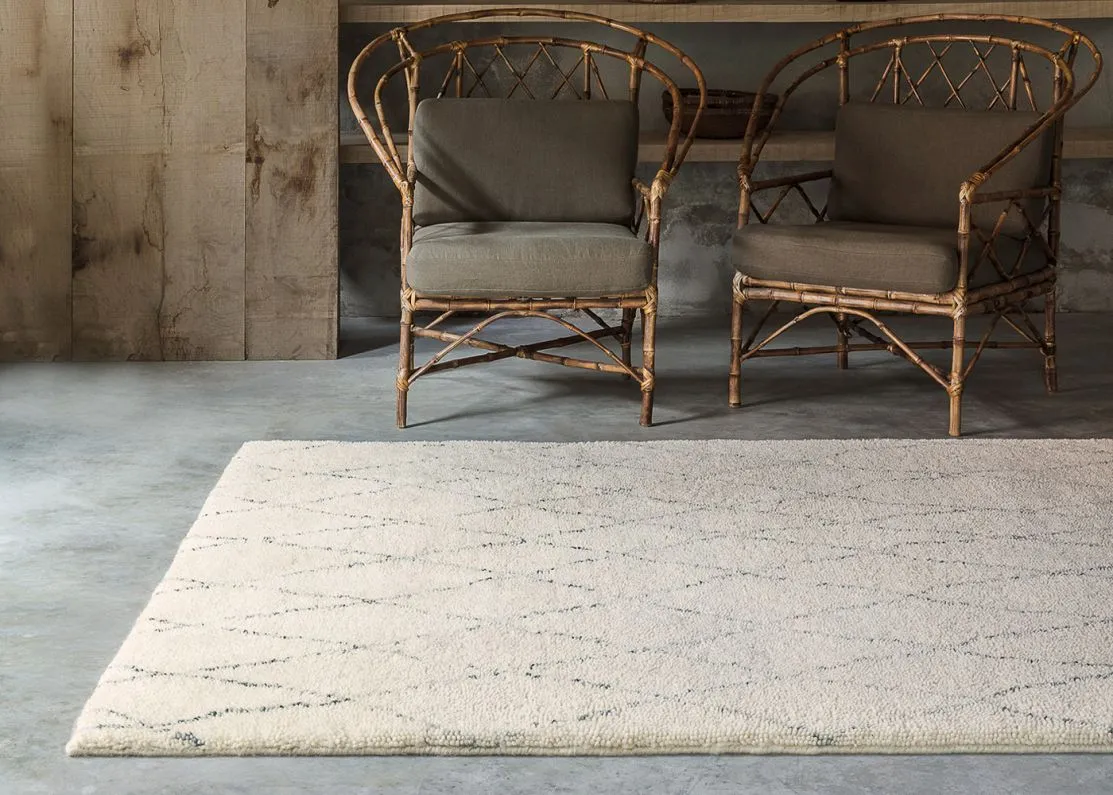Berber rugs have a long and rich history, and they remain one of the most popular and enduring styles of rug today. These distinctive and beautiful rugs are known for their unique patterns, thick pile, and durability, and they are popular in homes and businesses all around the world.
In this article, we’ll take a closer look at what makes Berber rugs so special, their history and origins, and the different types of Berber rugs that are available today.
Origins of Berber Rugs
Berber rugs have a long and fascinating history, dating back thousands of years. The name “Berber” comes from the Berber people, an ethnic group who have lived in North Africa for centuries. Traditionally, Berber rugs were handwoven by women in these communities, using techniques passed down through generations. They were often used for practical purposes, such as bedding or clothing, but also as a form of artistic expression.
The rugs were made using locally-sourced wool, which was spun by hand before being woven on a loom. The patterns and motifs used in Berber rugs were often inspired by the natural world, with designs based on geometric shapes, animals, and other elements found in the local landscape.
Today, Berber rugs are still made using many of the same traditional techniques and materials, but they are also produced on a larger scale using modern machinery.
Types of Berber Rugs
There are many different types of Berber rugs, each with their own unique characteristics and features. Here are a few of the most common:
Beni Ourain: These are some of the most well-known and popular types of Berber rugs. They are handwoven by the Beni Ourain people in the Atlas Mountains of Morocco, and they are known for their thick, plush pile and distinctive black and white geometric designs.
Azilal: These rugs are also made in Morocco, but they are known for their colorful, abstract designs. They are often made using natural dyes, and each rug is unique.
Boucherouite: These rugs are made by weaving together scraps of fabric, making them a more sustainable and eco-friendly option. They come in a wide range of colors and patterns, and they are often used as wall hangings or decorative accents.
Kilim: While not strictly a Berber rug, kilims are a type of flat-woven rug that are popular in many of the same regions as Berber rugs. They are made by tightly weaving together wool or other fibers, and they often feature bold, graphic designs.
Traditional vs. Modern Berber Rugs
Traditional Berber rugs or (Tapis berbères) are made using natural materials such as wool, camel hair, and sometimes cotton or silk. They are typically handmade by women in rural villages using a horizontal loom and a technique called the “Berber knot” or “Ghiordes knot,” which creates a raised, textured pile. Traditional Berber rugs are known for their geometric patterns and earthy, natural colors, often featuring bold lines and symbols that represent aspects of Berber culture and beliefs.
In contrast, modern Berber rugs are often made using synthetic materials such as nylon or polyester, and may be produced using machinery rather than by hand. They often feature a simpler, more minimalist design, with fewer geometric shapes and more muted colors. While some modern Berber rugs are still made by hand, many are mass-produced in factories and sold at lower price points.
Overall, traditional Berber rugs are highly valued for their intricate designs, natural materials, and unique cultural significance, while modern Berber rugs offer a more affordable and accessible option that may still evoke the look and feel of traditional Berber style.
If you’re looking to buy authentic Berber rugs, there are a few places you can check out:
- Morocco: Berber rugs are traditionally made by the Berber people of Morocco, so this is the best place to find authentic ones. You can find them in markets and souks throughout the country, particularly in Marrakesh, Fez, and Rabat. Make sure to haggle for the best price!
- Online retailers: There are many online retailers that specialize in authentic Berber rugs. Some well-known ones include TRIBAL ART MOROCCO. Make sure to read reviews and check for authentication certificates to ensure you’re getting a quality rug.
- Antique stores: If you’re looking for a truly unique Berber rug, check out antique stores. You may be able to find vintage or antique rugs that are one-of-a-kind and have a lot of character. Just be prepared to pay a premium price for them like GALERIE DEMESURE in France.
- Local shops: Check out local shops that specialize in home decor or rugs. You may be able to find a local seller who imports authentic Berber rugs from Morocco or other parts of North Africa.
Remember, authentic Berber rugs are made by hand using traditional techniques, so they can be quite expensive. However, they are also durable and can last for many years if properly cared for.
Choosing the Right Berber Rug
When choosing a Berber rug, there are a few things to keep in mind. First, consider the size and shape of the rug you need. Berber rugs come in many different sizes and shapes, from small accent rugs to large area rugs.
You should also consider the color and pattern of the rug. Berber rugs come in a wide range of colors, from neutral shades like white, beige, and gray to bright, bold colors like red, blue, and green. The pattern of the rug will also play a role in its overall look and feel, so choose a pattern that complements the decor of your home or business.
Finally, consider the quality of the rug. Handmade Berber rugs are often considered the most high-quality, as they are made using traditional techniques and high-quality materials. Machine-made Berber rugs can also be high-quality, but be sure to look for rugs that are made using natural fibers like wool or cotton.



